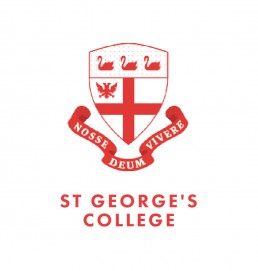PORTRAITS OF UWA OVERVIEW
Portraits of The University of Western Australia was a concert and photographic exhibit that presented a series of musical portraits of various aspects of the University and university life from throughout my time as an undergraduate.
The event was held on November 2, 2014 at The Hackett Dining Hall, St George’s College welcoming a capacity audience of over 200 members of the public including the University Chancellor Michael Chaney and Emeritus Chancellor Alex Cohen. The photographs from the exhibit remain on display throughout the building of St George’s College on the University of Western Australia’s Crawley Campus. This exhibition was sponsored by Perth Pro Lab and St George’s College.



RATIONALE
Portraits of UWA’ is a creative project I decided to undertake for my honours recital in composition under the extensive supervision of Dr. Christopher Tonkin. The project explored various aspects of my interactions with The University of Western Australia. This includes the architecture, culture, grounds, and wildlife through a collection of musical works and accompanying photographic exhibits.
Oddly enough, the idea for this project came about when contemplating a potential topic for my engineering research thesis in acoustics. My engineering supervisor challenged me to create a method or program that could be used to change an image into a piece of music, and a piece of music into an image. Having arrived late for lunch one afternoon, I was left eating on my own in the dining hall, and with the challenge fresh in my mind I stared at the portrait of Sir John Winthrop Hackett above the fireplace and thought, “how could I make this painting into a piece of music?” The problem proved beyond my comprehension as an engineer, and though it did not eventuate into an engineering research project, it proved an interesting challenge for a composer. This triggered the broader idea for creating a series of musical and photographic portraits in the spirit of the University’s recent centenary.
The six portraits in the suite represent my experience and interactions with various aspects of the University over the course of my eight years as a student since 2007. The suite can roughly be divided into three sets; two works for solo cello concerning still and moving water features of the Crawley campus; two works for solo piano exploring the connection between the old and historic, and the young and dynamic; and two works for string orchestra and soloist about birds native to the campus. Unlike the two sets for cello and piano, the set of works for string orchestra and soloist share no musical or metaphoric relation.
The set of accompanying photographic portraits were taken at the Crawley campus of the University in the spring of 2014. Each photographic portrait was taken during the composition of each musical portrait. This allowed a large amount of creative exchange between photographic and musical composition; aspects of the music could influence the composition of the photograph, and some photographic phenomena (such as long exposure photography) would make clear possibilities for musical exploitation. In this sense, the music and photographs may be considered as two interdependent and complementary halves of an artistic experience. For this reason, the photographic and musical portraits are intended to be experienced simultaneously.
I. THE MORETON BAY FIG
SOLO PIANO
I recall arriving at University as a freshman every morning at 7:30am for my 8:00am mathematics lectures. I always enjoyed the walk from the University bus stop to the Alexander lecture theatre in Arts, though most particularly I enjoyed the way the morning sun would light up the Moreton Bay fig tree as I passed under its branches. It was by far one of the largest and most expansive trees I had ever seen. I was fascinated by the vastness of its branches and how each branch would divide in two so clearly. Every morning as I walked under the tree, it would occur to me how many generations of busy young students have passed under this tree and how many future generations will also pass under this tree which appears stationary yet grows ever so slowly.
‘The Moreton Bay Fig’ was written as the first movement in a set of two piano portraits. This work is the static, slow-growing counterpoint to ‘Youth,‘ the chaotic and energetic second movement. ‘The Moreton Bay Fig‘ borrows from the melodic material of ‘Youth‘ while also using the idea of ‘branching’ as a governing mechanism for organic growth, progression and form. From each melodic branch shoots another, and another and so on until the work reaches a critical number of branches such that no individual melodic line is discernible amongst the vast amount of overlapping. Eventually, these branches terminate in leaves which fall from the tree. This is represented musically by a tripleted figure which slowly dissolves the dense melodic texture.
The Moreton Bay Fig
II. YOUTH
SOLO PIANO
“Youth” was commissioned by St George’s College and first performed by Adam Pinto to celebrate the acquisition of the College’s Fazioli concert grand piano, and the commencement of the College’s concert series in 2013. As youth is the central focus of the St George’s College Concert Series, I thought it fitting to compose a musical tribute to it. The piece embodies the same hope, excitement and optimism associated with youth that underscored the commencement and future of the concert series.
My secondary objective was to write a work that would demonstrate the unique capabilities and features of the piano. Faziolis are renowned for their crisp touch, rich resonance, tone and long sustain. Youth specifically exploits these resources.
Though the substance of this work predates the conception of the “Portraits of UWA“ suite, it is in essence a musical portrait of the bright young student minds at the University and has since been revised. ‘Youth’ is an abrupt musical contrast to the ‘The Moreton Bay Fig’. The work is driven forward by a perpetuum mobile, a rapid ticking fabric of clustered notes from which melodic fragments increasingly stated plainly and with confidence (though also flippantly at times). Tripleted material is borrowed from the first movement later during the work, alluding to a metaphoric connection between the fabrics of the University and constitution of its students.
Youth
III. THE ORBICULAR GRANITOID FOUNTAIN
SOLO CELLO
The Orbicular Granitoid Fountain is located between the University’s Computer Science and Geology buildings and is made of orbicular granitoid rock sourced from Mount Magnet in Western Australia, where it occurs in a small area on Boogardie Station. It consists of a large spinning orb of granite suspended on a bed of water.
The work ‘Orbicular Granitoid Fountain’ emulates my own interaction with the orb, casting attention to different aspects of the orb’s behaviour and beauty. The orb is always in motion, glittering with a thin reflective film of water atop the polished stone. Similarly, the rhythm of the cello is fast-moving and relatively constant. Interactions with the orb such as touching it may cause it to slow down, speed up, stop, or change direction. This interruption of momentum is translated musically through the augmentation of tempo. Variations in surface texture and colour in the granite dictate the harmonic colours of the work.
Furthermore, if you observe a single point on the orb you can see the veins of granite change from light to dark, interspersed with large drops of glittering silver ore. As the work progresses, more attention is given to the colours of the reflections in the thin film of water atop the granite. These reflections are linked to the natural harmonics of the cello due to their sharp and shimmering sound. Eventually, even the motion of the orb is ignored, and attention is given only to the reflections as you try to touch the sky and watch the water crest around your finger.
Orbicular Granitoid Fountain
IV. THE REFLECTION POND
SOLO CELLO
“The Reflection Pond“ provides a very static contrast to the turbulent “Orbicular Granitoid Fountain.“ Naturally reflections are much more prominent in the pond than in the orb fountain as the water is less turbulent. The beauty of the pond lies not just in the quality of its reflections, but in how susceptible these reflections are to disturbances in the water’s surface. It is possible to watch a disturbance such as a pebble or duck landing create ripples which spread to the edge of the pond, reflect inward and so on until they vanish. In effect, the water experiences multiple instances of reflection: the reflection of light from its surface and also the effect of waves and disturbances reflected within the pond.
I found these ideas of reflection to be an interesting premise for exploration on the cello. The work relies entirely on the open strings of the cello and natural harmonics of each string, that is the string is forced to vibrate in different ways without the length of the string being changed. Musically the reflection of light from water is likened to different modes of vibrations or natural harmonics acting atop an open string, just as we see both the water, and a reflection in the water. The cellist then alternates between open strings and harmonics at varying speeds during the piece, just as ripples of varying magnitude move through the water, occasionally even obscuring the reflection.
Reflection also underpins the form of the piece. The work starts at the bottom of the cello, close to the bridge on its highest string and over time progresses across the four strings to the lowest string. The bottom C string then acts as a point of reflection as the cellist jumps to the other end of the instrument and works their way back up to the top A string. Similarly, the dynamics take their cue from the varying intensity of the sun arching over the pond during the day, creating soft reflections in the early morning, hard reflections by midday and soft reflections again in evening.
The Reflection Pond
V. ELEGY FOR A DUCK
SOLO BASS CLARINET & STRINGS
I have always considered wildlife to be a large component of the University’s aesthetic appeal and charm. The presence of ducks in Crawley predates the foundation of the University and colonisation of Western Australia.
‘Elegy for a Duck’ recounts the profound feeling of disappointment, sadness and shame I experienced witnessing the death of a campus duck. It was early on a winter afternoon and as I stepped out for a run, I noticed a duck sitting on the side of Mounts Bay Road. I thought it an odd place for a duck to sit and took a closer look. The faint trail of blood stretching from the roadside and the duck’s very visible short breathing made it clear that it was injured. It didn’t appear particularly panicked, and was likely unable to comprehend that its wing had been clipped by a car. A colleague and I secured the duck for transport and made our way to the emergency vet clinic. As we made our way to the clinic, the duck’s breathing changed. It would breathe faster and deeper with increasing desperation, followed by increasingly extended periods of breathless silence.
My colleague, a medical student, explained that the duck was exhibiting ‘Cheyne-Stokes respiration,’ a cycle of breathing symptomatic of a terminal condition. I’d realised I had witnessed this process before. As the silence between breaths grew longer, I would wait anxiously for the next breath, not knowing if it was to be the last. The duck took its final breath in my lap two minutes from the clinic. Its passing stirred a chilling realisation: while this might be the first duck I had seen die as a result of our way of life, it was not the first, and it likely will not be the last.
‘Elegy for a Duck’ is a very literal representation of this experience. The bass clarinettist musically mimics the duck as it begins to exhibit Cheyne-Stokes respiration, taking increasingly exaggerated breaths between increasingly desperate melodic gestures. Large gaps of breathless silence between phrases are narrated by a simple string accompaniment echoing my own feelings of fright and despair on the drive to the vet.
Respiration
VI. ANDREW THE PEACOCK
SOLO VIOLIN & STRINGS
‘Andrew’ was the name of one of the original peacocks to colonise the Arts Faculty building in the ‘70s. Sadly, after some thirty years, Andrew passed away. Fortunately his legacy still lives on with Alistair the peacock featured in the image above, and I wrote this work to pay tribute to this unique UWA presence.
Generally speaking, I find peacocks are funny creatures. I recall hearing loud ‘meow’ like sounds in my morning maths lectures in Alexander Lecture Theatre in first year. I thought it odd that there were so many loud cat-like calls, yet I had not seen any cats in the area. It would take several weeks before I would realise the sounds were actually from peacocks. They would remain hidden for most of the early morning, contently perched on the rails of the New Fortune Theatre interrupting lecturers with their calls.
Having had more time to become better acquainted, I noticed some very interesting qualities of the peacock that lend to musical possibilities. When the peacocks are not flaunting their feathers, they are not impressive. I would even go as far as to say that they appear quite unprepossessing and a little bit awkward.
Strutting one foot at a time- pause-head turns left – then right – then forward- then right, then another step. We see a very different side to the peacock, however, when it fan its feathers, suddenly it becomes a beautiful majestic creature, its movements appear far more fluid and a loud array of sharply contrasting feathers catch the eye of passers.
Musically, I understand the peacock to be a creature which oscillates between either ‘avirtuosic’ or ‘virtuosic’ behaviour. Many of these avirtuosic traits occur in the first section of “Andrew the Peacock.“ Jerky staccato rhythms, plucked strings, apparently random pitches and abrupt silences create a general air of unremarkable awkwardness as Andrew struts along. As the piece progresses, we see more and more of the peacock’s virtuosity. As his feathers fan and shake, the violinist exhibits a variety of virtuosic and lush gestures as it moves through an ear catching variety of sharply contrasting harmonic and stylistic worlds with the orchestra. The work is interspersed with flamboyant impromptu cadenzas in which the behaviour of the violin can be described in no way other than shamelessly ‘peacocking.‘
Andrew The Peacock
THE ARTISTS
STRING ORCHESTRA
CONDUCTOR
Raymond Yong
VIOLIN I
Jasmin Parkinson- Stewart
Julia Nicholls
Louise May
VIOLIN II
Sarah Pappa
Marissa Loh
VIOLA
Eunise Cheng
Theo Triantos
CELLO
Osborn Fong
Olivia Thorne
DOUBLE BASS
Ebony Lim
SOLOISTS
BASS CLARINET
Ashley Smith
PIANO
Adam Pinto
VIOLIN
Paul Wright
CELLO
Jeremy Huynh
PHOTOGRAPHY
PHOTOGRAPHER
Michael Grebla
PHOTOGRAPHY ASSISTANT
Justin Kruger
EDITING ASSISTANT
Jeremy Ansell
PRINTING
Paul Jarvis & Perth Pro Lab





